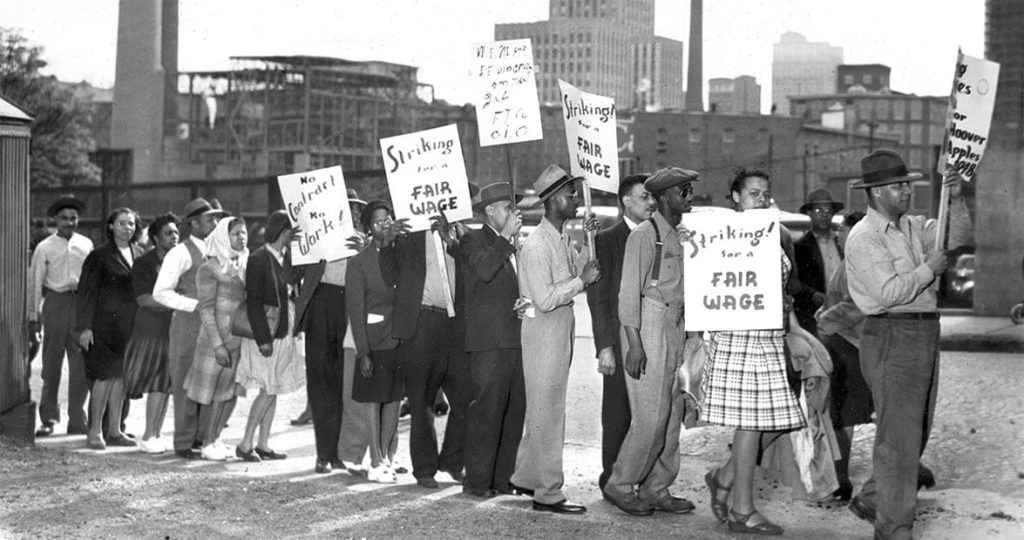The Problems of Large-Scale Organizing

The historian Benjamin Fong has a good piece on the failures of unions to engage in successful large-unit organizing. Despite all the positive talk about unions these days, it hasn’t really made much of a difference in terms of revitalizing the labor movement. One issue is that outside of higher ed and healthcare, unions are almost completely failed to figure out how to win large numbers of new members. Those are huge caveats though and we should be happy about it.
I analyzed the NLRB’s “large-unit elections”—those involving 500 or more eligible voters—over the past ten years. For fiscal years 2020–2023, these accounted for, on average, 1.5 percent of all elections. By contrast, small shop organizing (i.e., units of twenty-five or under) made up a solid majority of all elections—58.5 percent of the total number of elections in FY 2023, but these elections only involved 10 percent of all eligible voters. By contrast, the twenty-four large-unit elections that fiscal year accounted for 43.5 percent of all eligible voters.
The number of 500+ worker elections remained fairly stagnant between 2014–2020. After the pandemic drought of 2021, the number of large-unit elections has been increasing, with twenty-two in 2022 and thirty-two in 2023. Projecting out from the current data, we are scheduled to have about the same number (over thirty) this year.
This uptick coincides with a similar rise in victory percentage. Unions have become quite good at winning large-unit elections. From 2014–2021, 63 percent of large-unit certification elections (as opposed to decertification and employer-petitioned elections) were successful. From 2022 through the present, since the cultural vogue for union organizing has taken hold, that success rate has risen to an astounding 86 percent. Not only has the total number of workers petitioning the federal labor board for certified union elections slightly increased in the Biden recovery from the Covid-19 pandemic, but those who do so in large groups are also finding victories at a rate unseen in generations.
What’s intriguing about these results is that the composition of large-unit elections has changed considerably—by far the largest sectors involved in large-unit organizing are academic and healthcare unions. Healthcare unions have consistently run a large number of such certification elections over the past decades. But the more noticeable trend is in the marked increase in academic elections, culminating in a wave of very large-unit victories in 2022 and 2023.
…
Of SEIU’s large-unit wins, 63 percent have been in healthcare, but the union has also won large-unit elections for academics, janitors, and airport service workers, not to mention its seeding of Workers United, which among other things has recently brought Starbucks to the table. SEIU has become very successful at winning large hospital campaigns in recent years: their Committee for Interns and Residents (SEIU-CIR) has won six large-unit elections since 2022, and SEIU-UHW is quickly organizing the Sharp Healthcare system (with 1000+ worker hospital units) in southern California. Gladstein’s local, 1199SEIU-UHE, has won a few such victories in recent years, including a 948-person unit at WestMed Medical Group in Yonkers, NY, earlier this year.
The other major international running large-unit campaigns is the UAW, better known recently for its successful Stand-Up Strike on the Big Three automakers, its commitment to new organizing, and its major win at the Volkswagen plant in Chattanooga, TN, for 4,326 workers. Despite these important victories in its namesake industry, 52 percent of the UAW’s large-unit wins in the last decade have come from academia.
What would it take to reverse the decline of large-unit organizing beyond healthcare and academia? This is one facet of the broader question of how to reverse labor’s decline, which no one today can claim to have solved. There may be lessons from recent large-unit victories that can be shared among unions and port to other contexts. As in the case of the UAW at Volkswagen in Chattanooga, which lost a few times before it finally won, such lessons might take years to bear fruit, but the seeds must be planted now.
I feel this is right–basically it takes many years to win this kind of big election and you just have to keep moving ahead, figuring out what works, and keep trying. It’s interesting that the changing face of labor means nurses and teachers and grad students. Even the labor movement struggles to recognize, still often preferring to think of itself primarily as a movement of construction workers and factory laborers. State and local federations are often still dominated by these often declining unions. But if higher ed is where the energy, then a few things have to happen. First, higher ed employees have to understand what it means to be in a union, which is often easier for grad students than faculty, though grad students have their own problems of unrealistic expectations and the belief that their unions need to implement whatever the form of revolutionary politics that exist in grad student world in a given year. But many faculty might vote for a union and then their next action is to attack their fellow faculty member in some horrible way, or even worse, see the dean as their friends and tell higher administration about union business. Second, if you can establish real union cultures, you have to become a force at the state federation level before moving up. But then lots of faculty members don’t see themselves as having much in common with other workers. Nurses have a whole set of other issues.
In short, this stuff is really complicated and anyone who says they have the answer to what ails the labor movement is full of shit. They don’t. They have ideology.


